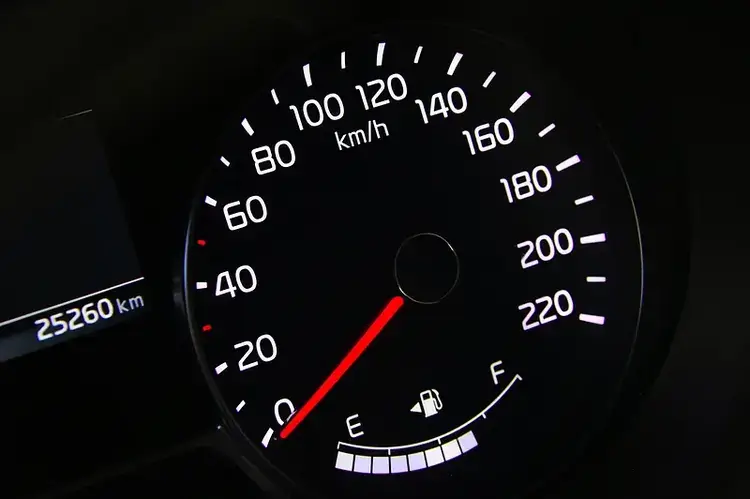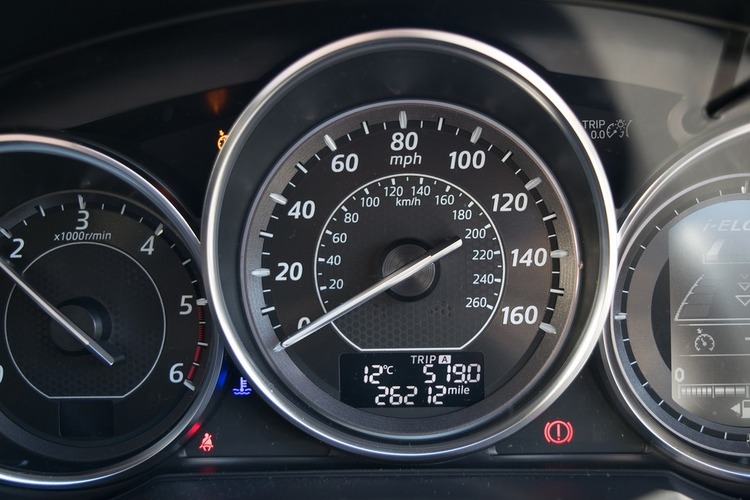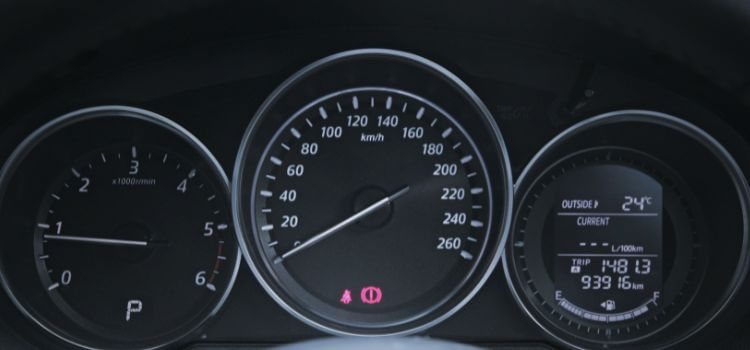As an Amazon Associate, I earn from qualifying purchases
To test a speedometer sensor, start by using a multimeter across the two wires. Set the meter to low-ohms and take a reading.
Then reverse the connections and check if you get the same reading. Finally, check each wire to the case of the sensor to ensure proper functionality. By following these steps, you can accurately test a speedometer sensor using a multimeter.
Introduction To Speedometer Sensors

A speedometer sensor is a crucial component of a vehicle’s speedometer system. It is responsible for providing real-time data on the speed at which a vehicle is traveling. Without a functional speedometer sensor, drivers would have no way of accurately knowing their speed, which can lead to hazardous situations on the road.
What Is A Speedometer Sensor?
A speedometer sensor, also known as a vehicle speed sensor or VSS, is an electronic device that measures the rotational speed of a vehicle’s transmission. It typically utilizes magnets or hall-effect sensors to detect the rotation of specific components within the transmission system, such as the output shaft or differential. This sensor generates electrical signals that are sent to the speedometer, providing a precise reading of the vehicle’s speed.
Importance Of Testing Speedometer Sensors
Testing speedometer sensors is crucial for ensuring the accuracy of the speedometer reading and the overall safety of the vehicle. Over time, speedometer sensors can become worn out or malfunction, leading to inaccurate speed readings or total failure of the speedometer system. Testing speedometer sensors regularly helps to identify any issues and allows for timely repairs or replacements.
Here are some reasons why testing speedometer sensors is important:
- Accurate speed readings: A properly functioning speedometer sensor ensures that drivers have accurate speed readings, helping them adhere to speed limits and drive safely.
- Prevents accidents: If a speedometer sensor is faulty, the speedometer may display incorrect readings, potentially leading to accidents caused by the driver either speeding or driving too slowly.
- Preserves other vehicle systems: A malfunctioning speedometer sensor can affect other vehicle systems that rely on speed data, such as the transmission, cruise control, and anti-lock braking system (ABS). By testing speedometer sensors, these potential issues can be detected and prevented.
- Cost-effective maintenance: Regular testing of speedometer sensors allows for early detection of problems, preventing more costly repairs or replacements down the line.
Overall, testing speedometer sensors is a crucial aspect of vehicle maintenance and safety. By ensuring that these sensors are functioning properly, drivers can have confidence in the accuracy of their speedometer readings and promote a safer driving experience.
Methods And Tools For Testing Speedometer Sensors

When it comes to testing speedometer sensors, there are several methods and tools you can utilize. Testing with a multimeter, testing a Ford speedometer sensor, and testing a magnetic speed sensor are some of the commonly used approaches. Let’s explore each of these methods in detail:
Testing With A Multimeter
Using a multimeter is a simple and effective way to test the functionality of a speedometer sensor. Here’s how you can do it:
- Start by disconnecting the speedometer sensor from the vehicle’s wiring harness.
- Set your multimeter to the low-ohms setting.
- Place the multimeter probes across the two sensor wires.
- Take note of the reading on the multimeter display.
- Reverse the connections of the multimeter probes and check if you get the same reading.
- Next, check each wire of the sensor by touching one probe to the wire and the other probe to the sensor’s case. Make sure each wire shows continuity.
Testing A Ford Speedometer Sensor
If you own a Ford vehicle, testing the speedometer sensor requires specific steps. Follow these instructions:
- Locate the speedometer sensor on your Ford vehicle. It is usually located on the transmission housing.
- Disconnect the wiring harness connected to the sensor.
- Using a multimeter set to the low-ohms setting, measure the resistance across the two sensor wires.
- Compare the reading with the specifications mentioned in your vehicle’s service manual. If the reading deviates significantly from the recommended value, the sensor may be faulty.
- Additionally, check each wire for continuity by testing its connection to the sensor’s case.
Testing A Magnetic Speed Sensor
Magnetic speed sensors, also known as reed switch sensors, require a different testing approach. Here’s how you can test a magnetic speed sensor:
- Disconnect the speedometer sensor from the wiring harness of your vehicle.
- Remove the sensor from its mounting location.
- Using a multimeter set to the low-ohms setting, connect one probe to each of the sensor wires.
- Rotate the sensor by hand while observing the multimeter display. The resistance should change as the sensor’s magnet passes by the reed switch.
- If there is no change in resistance, or if the resistance is outside the specified range, the sensor may be faulty and needs to be replaced.
It is essential to consult your vehicle’s service manual for specific instructions and resistance values related to your vehicle’s speedometer sensor. Following these testing methods and using the right tools will help you accurately diagnose any issues with your speedometer sensor.
Related: How to Fix Motorcycle Speedometer
Common Issues And Troubleshooting Tips For Speedometer Sensors

Learn how to test a speedometer sensor with these troubleshooting tips. Start by using a multimeter to check the resistance across the wires and then reverse the connections to verify the reading. You can also test each wire’s connection to the sensor’s case.
Symptoms Of A Bad Speedometer Sensor
A bad speedometer sensor can cause various issues with your vehicle’s speedometer readings. Here are some common symptoms that indicate a faulty speedometer sensor:
- Inaccurate speed readings: Your speedometer may display incorrect speeds or may not show any speed at all.
- Fluctuating speedometer readings: The speedometer needle may jump around or fluctuate randomly while driving.
- Speedometer stops working: The speedometer may stop working completely, not displaying any speed readings.
- ABS or traction control warning lights: A malfunctioning speedometer sensor can trigger the ABS or traction control warning lights on your dashboard.
- Transmission shifting issues: The vehicle may experience transmission shifting problems due to incorrect speed signals.
If you are experiencing any of these symptoms, it is likely that your speedometer sensor needs to be tested and possibly replaced.
How To Troubleshoot Speedometer Sensor Issues
Before replacing a speedometer sensor, it is important to troubleshoot the issue to ensure that the sensor is indeed faulty. Here are some steps you can follow to troubleshoot speedometer sensor issues:
- Check the wiring connections: Inspect the wiring connections between the speedometer sensor and the speedometer gauge. Ensure that there are no loose or damaged wires causing the issue.
- Inspect the sensor for any physical damage: Look for any visible damage or signs of wear on the speedometer sensor. If the sensor is damaged, it may need to be replaced.
- Test the sensor with a multimeter: Using a multimeter, you can test the resistance of the speedometer sensor. Follow the manufacturer’s instructions for your specific vehicle model to perform this test accurately.
- Simulate vehicle speed: Connect the speedometer sensor to a power drill to simulate the rotation of the vehicle’s transmission. Use a multimeter to measure the voltage output of the sensor as the speed increases. If the voltage output corresponds correctly with the speed, the sensor is likely functioning properly. If not, it may need to be replaced.
It is recommended to consult a professional mechanic or refer to your vehicle’s service manual for detailed instructions on how to test and troubleshoot the speedometer sensor specific to your vehicle model.
Related: Speedometer Reading Slower Than Actual Speed?
Frequently Asked Questions For How To Test A Speedometer Sensor
Can You Check A Speed Sensor With A Multimeter?
Yes, you can check a speed sensor with a multimeter by connecting it to the two wires, setting the meter to low-ohms, and taking a reading. Reverse the connections to see if you get the same reading. Check each wire to the case of the sensor as well.
How Can You Tell If The Speedometer Sensor Is Bad?
To test if the speedometer sensor is bad, use a multimeter. Connect it to the sensor’s wires, set it to low-ohms, and take a reading. Reverse the connections and check if you get the same reading. Also, check each wire to the case of the sensor.
How Do You Test A Sensor With A Multimeter?
To test a sensor with a multimeter, connect it to the two wires of the sensor. Set the meter to low-ohms and take a reading. Reverse the connections and check if you get the same reading. Also, check each wire to the case of the sensor.
How Do You Troubleshoot A Speed Sensor?
To troubleshoot a speed sensor, use a multimeter. Connect it across two wires, set it to low-ohms, and take a reading. Reverse the connections and see if you get the same reading. Then check each wire to the case of the sensor.
You can also simulate the rotation of the transmission using a power drill and check if the voltage increases as the speed increases.
Conclusion
Testing a speedometer sensor is a straightforward process that can be done using a multimeter. By following the steps mentioned in this blog post, you can easily determine if your speedometer sensor is functioning properly or if it needs to be replaced.
Remember to connect the multimeter to the two wires, set it to low-ohms, and check for consistent readings. This simple test can save you time and money in diagnosing speedometer issues.
As an Amazon Associate, I earn from qualifying purchases

